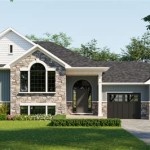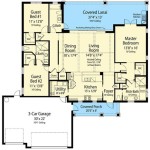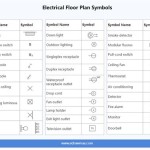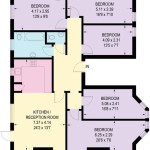Northern Flying Squirrel Nest Box Plans
Northern flying squirrels are a fascinating species found throughout North America. These nocturnal creatures play a vital role in maintaining healthy forest ecosystems, and their populations are declining in certain areas. Providing nesting opportunities can help support their survival. This article will guide you through building a nest box specifically for Northern flying squirrels, tailored to their unique needs.
Understanding Northern Flying Squirrel Habitat Preferences
Before diving into the construction process, it's crucial to understand the preferences of Northern flying squirrels. These arboreal mammals favor mature forests with a mix of hardwood and conifer trees. They seek out cavities in trees, abandoned bird nests, or other protected spaces for nesting and raising young.
Their preferred nesting locations are typically high above the ground, offering protection from predators and harsh weather conditions. The ideal nest box should mimic these natural preferences, providing a safe and comfortable habitat for these elusive creatures.
Essential Nest Box Dimensions and Materials
The dimensions for a Northern flying squirrel nest box should be carefully considered to accommodate their size and nesting habits. The internal space of the box should measure approximately 12 inches wide, 12 inches deep, and 16 inches high. This size allows for ample room for the squirrel to move around comfortably and raise its young.
The nest box can be constructed using durable materials such as untreated cedar or pine. These wood types are naturally resistant to rot and decay, ensuring the longevity of the nest box. Avoid using treated lumber as it can contain chemicals harmful to wildlife. The exterior of the box can be left natural or painted with a non-toxic, weather-resistant paint.
Detailed Construction Steps
Now, let's delve into the step-by-step construction process for a Northern flying squirrel nest box:
- Cut the Wood: Begin by cutting the wooden panels according to your desired dimensions. For a standard nest box, you will need four side panels measuring 12 inches by 16 inches, a bottom panel measuring 12 inches by 12 inches, and a top panel measuring 12 inches by 12 inches.
- Assemble the Base: Attach the four side panels to the bottom panel using wood screws. Ensure the sides are securely fastened to create a sturdy base for the box.
- Attach the Top: Once the base is assembled, attach the top panel to the four side panels. Leave a small gap of 1 inch between the top panel and the side panels to create an air vent for ventilation.
- Install the Entrance Hole: Choose a location on one of the side panels for the entrance hole. The recommended size for the hole is 3 inches in diameter. Cut the hole using a jigsaw or a drill with a hole saw. Secure the entrance hole with a piece of metal mesh to prevent larger animals from entering.
- Add a Back Panel: Cut a wooden panel measuring 12 inches by 16 inches to serve as the back panel. This panel can be attached to the back side of the nest box using wood screws.
- Installation: The nest box should be installed at a height of 10-20 feet above the ground, ideally on a tree with a diameter of at least 12 inches. Secure the nest box to the tree using metal straps or bolts.
By following these steps, you can construct a durable and functional nest box that will offer a safe and comfortable habitat for Northern flying squirrels.
Additional Recommendations for Success
To increase the chances of attracting Northern flying squirrels to your nest box, consider the following recommendations:
- Location: Install the nest box in a mature forest, preferably in an area with dense vegetation. Choose a tree with a large diameter for maximum stability.
- Orientation: Face the entrance hole away from prevailing winds and direct sunlight to protect the squirrels from harsh weather conditions.
- Maintenance: Regularly inspect the nest box for any signs of damage or decay. Clean the box annually, removing any debris or unwanted nesting material.
- Monitoring: Observe the nest box for signs of use, such as droppings or nesting material. You may also consider installing a trail camera to monitor the squirrels' activity.
By taking these precautions, you can create a welcoming habitat for Northern flying squirrels and contribute to their conservation efforts.
Glaucomys Org Flying Squirrel Nesting Box Plan

Woodland Wildlife Nest Boxes Nc State Extension Publications

Becoming A Flying Squirrel Landlord Crittering

Flying Squirrel House Northern Nest Box Southern Condo Wildlife Rehab Approved Predator Safe Flyer

Project Ideas Lakelse Watershed Stewards Society

Flying Squirrel House Northern Nest Box Southern Condo Wildlife Rehab Approved Predator Safe Flyer

Northern Flying Squirrel Nest Box Action Permabitat
Southern Flying Squirrel Nest Box
Flying Squirrel Nesting Boxes For Life Rank Project Lumberjocks Woodworking Forum

Handmade Southern Flying Squirrel Nest Box Wildlife Rehab Approved Northern Shelter Durable








